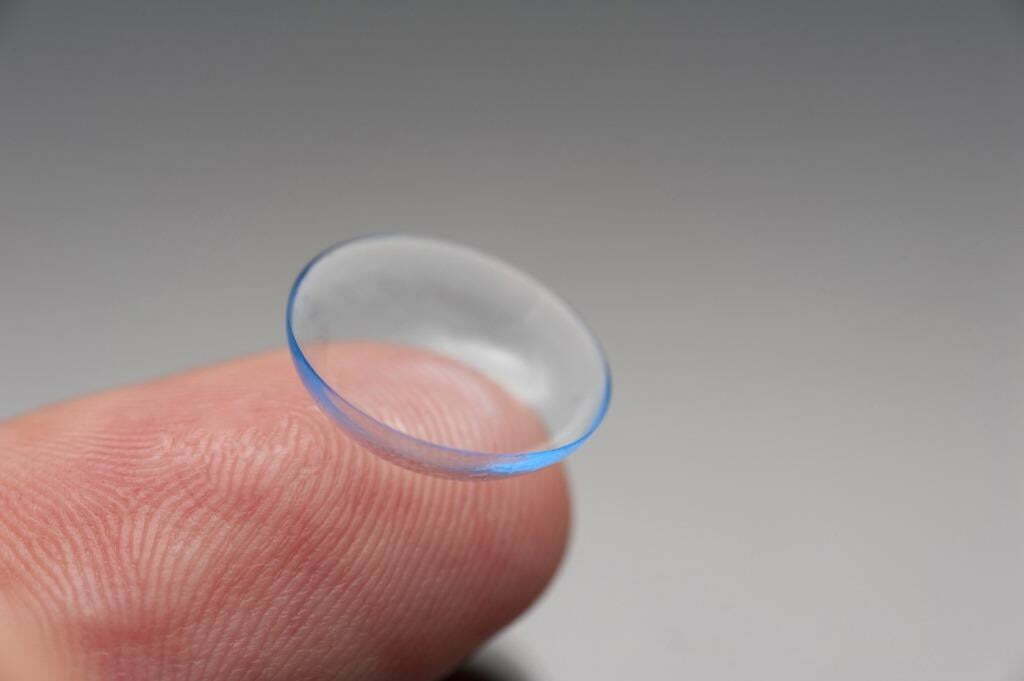Contact lenses do not get fogged up when wearing a mask. Additionally once you put them in your eyes in the morning you do not need to readjust them again until evening. Once you get used to wearing contact lenses you will lose the tick which makes you constantly push your eyewear back to the top of your nose. Think how much this helps reduce the health risk! Do you have dark marks on your nose from where the glasses touch it? That is right, this will also gradually disappear. On top of all this now you can finally play sports without being partially blind. And frankly, vision is just that much clearer with lenses than it is with glasses.
“But I regularly fall asleep with my glasses on! This can only be worse if I wear contact lenses.”, you say?
Not to worry. This used to be a problem in the old days, nowadays almost every contact lens producer has an “extended wear” version as well. So you may actually sleep with your extended wear contacts. The extended wear contacts are designed for continuous use. Which means that if there are no events that would cause you to remove your lense like dust or water getting in the eye, which barely ever happens, you can wear these contacts for six to seven days without having to remove them. After waking up after a night of sleeping with your contacts still inserted all you need to do is blink a couple of times and soon all will be good. We would still recommend daily removal though.
“But I can’t stand anything getting near my eye! There is no way I would be able to insert a contact lens.”, you say as well.
Do not worry, everyone thinks this. Just find a good tutorial on YouTube and try! After a while you will get used to it. The author of this article was also squeamish about his eyes and now I can insert and remove my contact lenses without even using a mirror! After a scary couple of times it becomes like second nature. Oh and, don’t worry if at first they seem uncomfortable, the eye treats them like a foreign object at first, but after several days of use it will accept the lens and using them will be natural.
Choosing the right contact lenses
Obviously the best thing to do when choosing the right type of contact lens is to consult your ophthalmologist. Especially if you have astigmatism, in that case you will not be able to select the correct power on your own.
However if you can not get to your ophthalmologist and you do not have astigmatism the rule of thumb is to choose a contact lens that is by 0,25 weaker than your glasses. For example if the left lens in your glasses is -2.00, the correct contact lens will be -1.75 and if it is +2.00 then the correct lens will be +1.75.
Which brand should you choose?
This you will have to decide on your own through trial and error. Everyone has their own preference as every individual is unique.
After choosing the correct power and curvature, the most important specification to look at is the oxygen permeability value. This is denoted with Dk. The higher the Dk value is the more comfortable to wear a contact lens is. The early models had a low oxygen permeability at 6-8 which was too low. The minimum DK value approved by FDA is 9, anything below that will not let enough oxygen reach your eyes. With the development of silicone hydrogel contact lenses today all soft contact lenses have a Dk value above 20 and some go as high as 163 (Bausch & Lomb ULTRA).
The other most important specification regarding comfort is the water content. Unless you have the dry eye syndrome the higher the water content, the more comfortable the lens is. The higher water content lenses are softer hence more comfortable to wear, however the water content evaporates with use and so the lens absorbs tears from the eye to replace it. If the eye does not produce enough tears then the lens absorbs too much and leaves the eye dry.
Best contact lenses for dry eyes
The solution for dry eye syndrome is to use high Dk value and low water content lenses like Air Optix Aqua and Air Optix Night & Day Aqua.
The other solution is to use rigid gas permeable lenses which are made of harder material, but they also allow more oxygen to reach the eye.
The author of this article has so far tried only monthly soft contact lenses, more specifically these: Coopervision Biofinity, Air Optix Aqua, Air Optix Night & Day Aqua, Acuvue Oasys, Bausch & Lomb Purevision2, Coopervision Proclear.
By far the most comfortable ones were Coopervision Biofinity, followed by Air Optix Night & Day Aqua. Both of these are “Extended Wear”, which is very nifty when you are camping and can not remove your contact lenses in a hygienic way.




